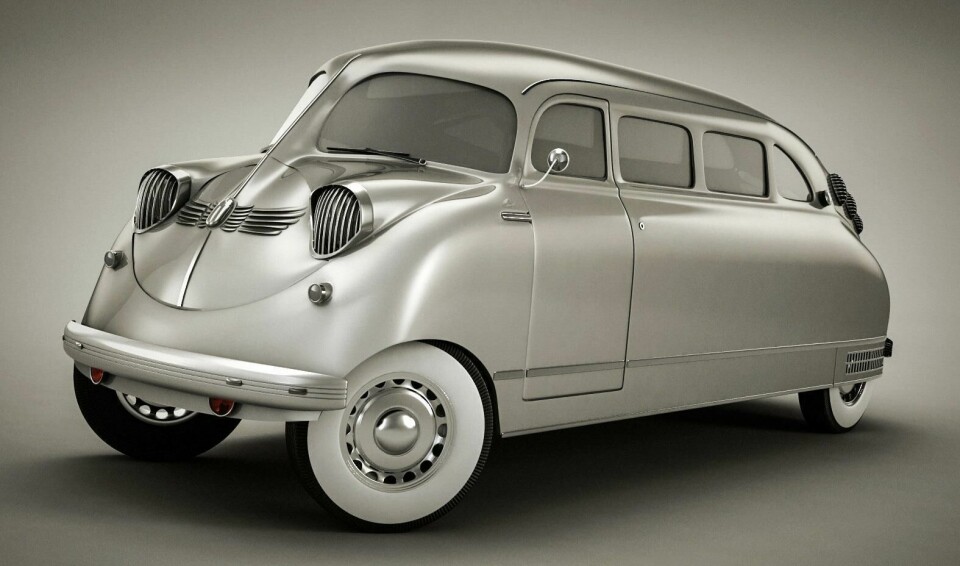
Concept Car of the Week: Stout Scarab (1936)
William Bushnell Stout took inspiration from aviation to create the world’s first minivan the Stout Scarab. The Scarab recently acted as inspiration for the Hyundai Prophecy concept (2020)
William Bushnell Stout was an engineering pioneer and Renaissance Man of the 1920s and 1930s, an Elon Musk or Steve Jobs-type figure who worked to advance the automobile and the aeroplane, and learned from each how to improve the other.

Although primarily concerned with aviation, Stout served as the president of the Society of Automotive Engineers. As part of this role, he’d met Buckminster Fuller, and written an article about his aerodynamic Dymaxion Car for the society’s newsletter. This was part of what inspired Stout to create a new kind of car, influenced by the new science of aerodynamics, and his own advanced knowledge of automotive and aeronautical technologies.

The Stout Scarab was a streamlined, fenderless, monoform six-passenger sedan that can stake a claim as the world’s first minivan. With a stubby front end, a boxy middle and a gloriously curved rear, the car certainly resembled its beetle namesake, the scarab.

The packaging was probably the Scarab’s greatest contribution to the development of the modern car. The wheels were placed at the corners, not unusual for the time, but rather than following the convention of expressing the fenders and running boards as separate design elements, the car’s body stretched right over them in a single, sleek form.

The engine was located in the rear, and the hood and front-end assembly were minimised. This allowed the passenger cabin to be stretched out between the wheels, giving the volume of a small room and the appointments to match. The driver sat immediately behind the front wheel, creating the first cab-forward architecture.

Art Deco design details included the winged moustache sitting between the two eye-like headlights, and over a smiling hood shutline, chrome wraparound bumpers, and an epic waterfall grille that extended from the top of the rear window down across the engine to the bumper below.

The interior was accessed either through a driver’s door or a single middle door on the passenger side. The driver’s seat and the rear bench seat were fixed, but other seats could be moved around to face each other, creating a travelling social space, complete with a small table.

The seats could be removed and the table folded out to allow space for a small portable office for the traveling businessman, complete with a bed. The seats were leather and chrome, and the interior finishes were light wood panelling and a polished wicker headliner.

The creative engineering of the Scarab was equal to the packaging, employing one of the first examples of monocoque construction and four-wheel independent suspension.

The first running prototype Scarab was built in 1932 and subsequent cars were built over the rest of the decade. Stout had never intended to build more than 100 cars a year, at a price of $5000 (or around $89,000 today) and they were to be sold on an “invitation only-basis”. Records are missing and stories conflicting, but between six and nine Scarabs were built, each different according to the owner’s tastes.

Stout (left, above) abandoned his Scarab project as World War II intervened, and he sold his company and services to Consolidated Vultee Aviation Aircraft (Convair). However, after the war, he developed one more Scarab – the Experimental (below). Working with Owens-Corning, the car was the world’s first to feature either a fibreglass body or pneumatic suspension.

Today, miraculously, five Scarabs still exist, and two of these are in running condition. The Scarab and William Stout remain an inspiration to designers, especially now as we consider anew the interior space of the car without a driver. Will it have the flexibility and functionality of the Scarab?

Stout’s talents for transferring technology between one form of transport to another should inspire us to look around for trends and inspiration in unlikely places. And lastly, Stout’s personal engineering and design motto, “Simplicate (as opposed to complicate) and add lightness” – often wrongly ascribed to Colin Chapman – inspires us in an era of over-designed objects and environments.





























